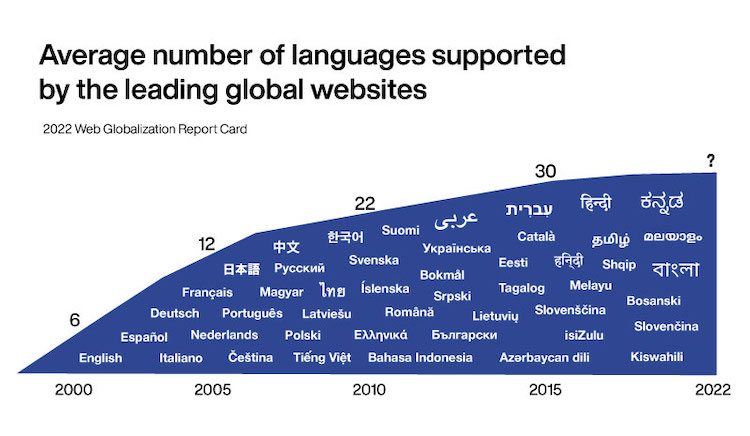One of the four major benchmarking criteria of the Web Globalization Report Card is global reach. That is, what languages do you support? And how many languages do you support?
To score a perfect 25 points in this category, a website must support 50 or more languages.
That is a lot of languages. But if you take a global view of the internet, 50 is not many languages at all. There are thousands of languages in use around the world, which makes 50 languages sound trivial by comparison.
Wikipedia, which emerged number one in the 2022 Report Card, supports more than 350 languages.
In the field of web and software globalization, there is often talk of “major” and “minor” languages, based on the number of native speakers of the respective languages. German, French and Chinese are considered major languages. And languages such as Marathi (83 million native speakers) or Bangla/Bengali (300 million speakers) are often viewed as minor languages (by Western companies) despite the significant number of native speakers. These labels are intended to help organizations make more efficient use of limited translation resources. We all set priorities in how we spend money, so it’s understandable why companies focus on supporting some languages over others. But we must never forget that, in the eyes of the speakers, there is no such thing as a minor language.
Here is an overview of the languages spoken by the world’s 4.1 billion internet users:

As you can see, English is not the leading language (though it remains the dominant “second language” spoken around the world). The largest slice is “all other languages” — which underscores why 50 languages is the benchmark for being considered a leading global website.
As the rest of the world’s population goes online, expect to see languages such as Hindi, Arabic, Indonesian and Bangla take increasingly larger slices of the pie.
Finally, keep in mind that web globalization is journey, not a destination. You may begin adding one language this year and another language next year and then one day look back to find that you support 30 or more languages. Like companies such as Honda, Coca-Cola, FedEx and Apple.

The average number of languages supported by the leading global brands is now 34.
To learn more, check out the 2022 Web Globalization Report Card.
